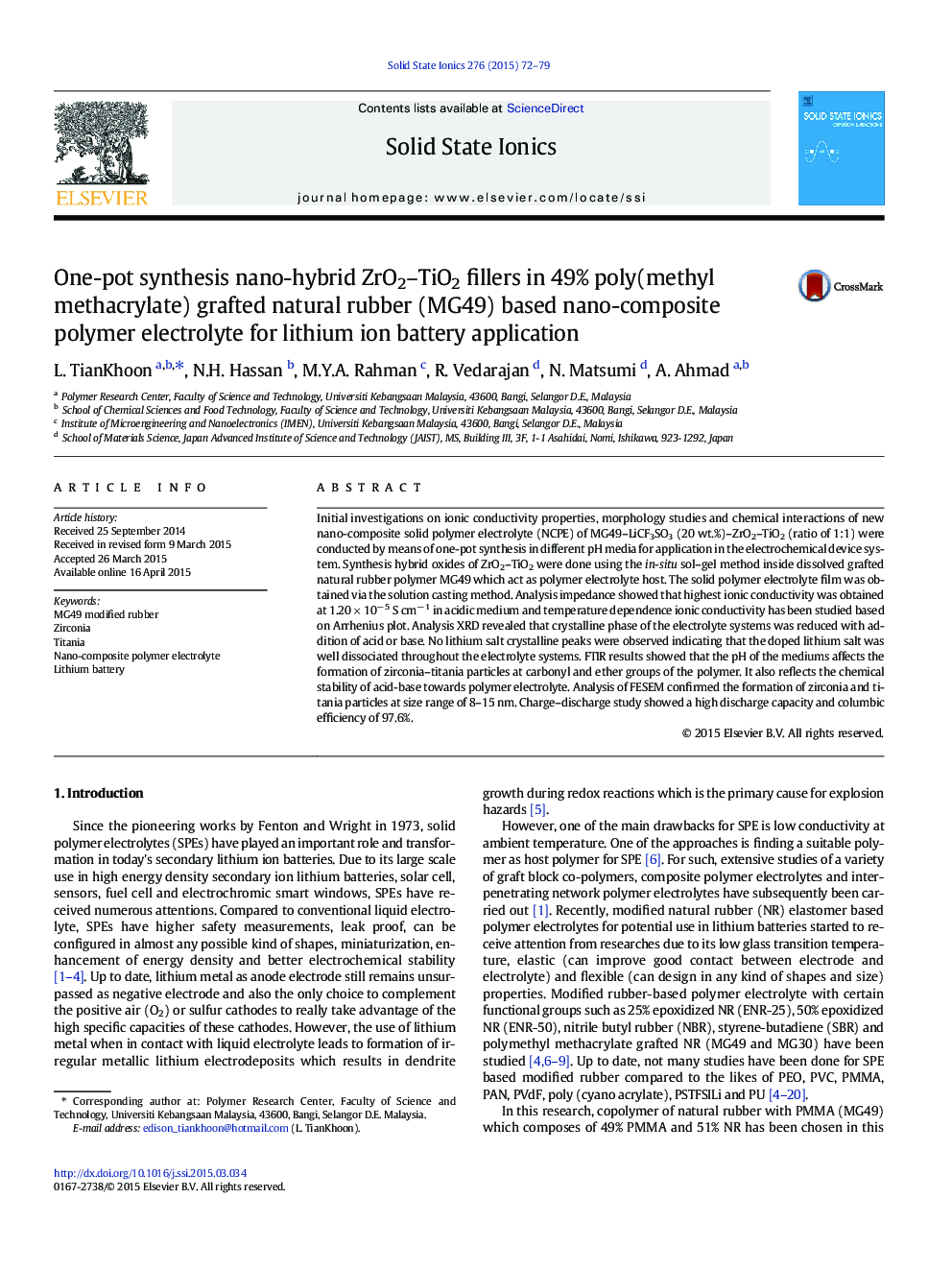| کد مقاله | کد نشریه | سال انتشار | مقاله انگلیسی | نسخه تمام متن |
|---|---|---|---|---|
| 1297807 | 1498267 | 2015 | 8 صفحه PDF | دانلود رایگان |

• One pot synthesis of hybrid fillers ZrO2–TiO2 via in-situ sol–gel method under different pH media.
• Flexible and free-standing modified rubber (MG49) based electrolyte for application for lithium ion battery
• Concentration of fillers and different pH medium influenced and enhanced on ionic conductivity. Nevertheless, different pH values did not changed chemical structure when observed in FTIR peaks.
• Nano hybrid fillers in range of 8-15 nm were successfully produced.
• Obtained good discharge capacity in charge-discharge with columbic efficiency of 97.6%.
Initial investigations on ionic conductivity properties, morphology studies and chemical interactions of new nano-composite solid polymer electrolyte (NCPE) of MG49–LiCF3SO3 (20 wt.%)–ZrO2–TiO2 (ratio of 1:1) were conducted by means of one-pot synthesis in different pH media for application in the electrochemical device system. Synthesis hybrid oxides of ZrO2–TiO2 were done using the in-situ sol–gel method inside dissolved grafted natural rubber polymer MG49 which act as polymer electrolyte host. The solid polymer electrolyte film was obtained via the solution casting method. Analysis impedance showed that highest ionic conductivity was obtained at 1.20 × 10− 5 S cm− 1 in acidic medium and temperature dependence ionic conductivity has been studied based on Arrhenius plot. Analysis XRD revealed that crystalline phase of the electrolyte systems was reduced with addition of acid or base. No lithium salt crystalline peaks were observed indicating that the doped lithium salt was well dissociated throughout the electrolyte systems. FTIR results showed that the pH of the mediums affects the formation of zirconia–titania particles at carbonyl and ether groups of the polymer. It also reflects the chemical stability of acid-base towards polymer electrolyte. Analysis of FESEM confirmed the formation of zirconia and titania particles at size range of 8–15 nm. Charge–discharge study showed a high discharge capacity and columbic efficiency of 97.6%.
Journal: Solid State Ionics - Volume 276, August 2015, Pages 72–79